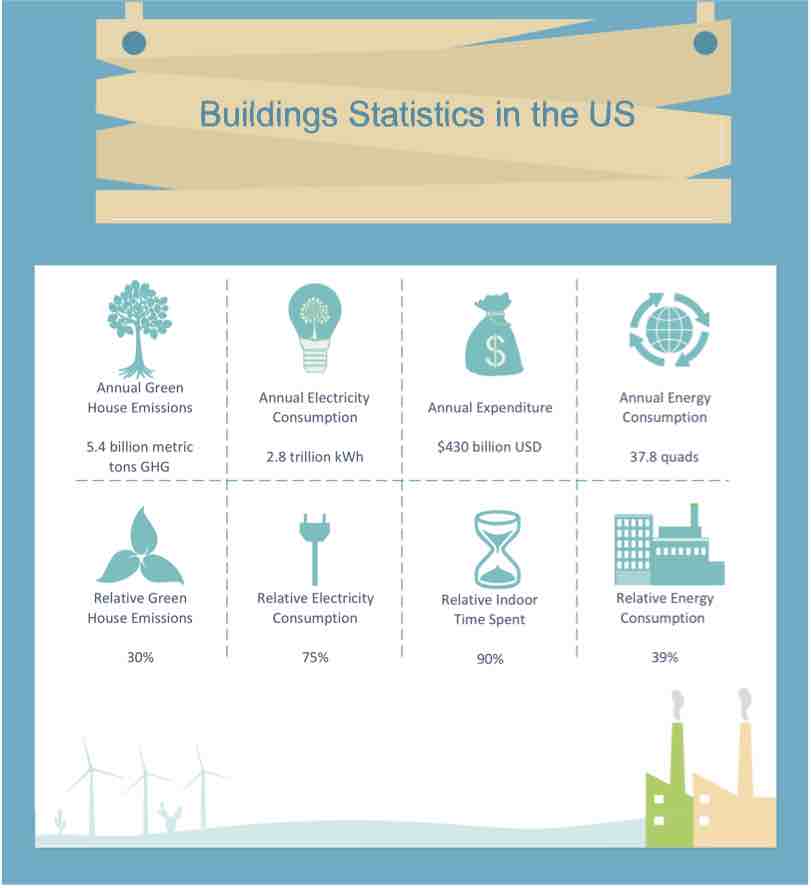
With the advent of new ideas, research, technologies, and advancements being developed every day, only a small fraction of them gets implemented on a large scale. The ones that are adopted may not necessarily be the best solution from a technical point-of-view. Furthermore, it may take several years to decades for such advancements to reach the hand of users and customers.
Why does this happen? Are these technologies, research, and prototypes not advanced (or simple) enough? Are they not needed by the community, or is the market not prepared or ready for them? Perhaps, the decision makers are not aware of the technologies, or they are blindsided by short-term objectives. One victim of this situation is the industry of smart buildings–the places where we work, live, and spend 87% of our time. Buildings contribute significantly to the total energy consumption, greenhouse gas emissions, and electricity worldwide. In today’s technological age of artificial intelligence, machine learning, controls, self-driving vehicles, robotics, cloud, smart devices, and information at the tip of our hands, the building industry in general is far behind the curve.

Apparently, there is a huge gap between the research, technological, and business worlds. Technology is used in a broader sense here encompassing hardware, software, algorithms, platforms, controls, communication, sensors, etc. For instance, a small commercial facility can collect millions of data points in a day at a 1-minute interval. As there are 5.5 million commercial buildings alone in the US, the data collected just in one single day can be ginormous even considering that only a small portion of buildings will have the capability to do so. However, not many buildings realize the full (or even close enough) potential of this data through data-driven ecosystems or advanced controls based on proven scientific methods and capabilities available in the market. Applying advanced control solutions can save up to 20% energy (7.5 quads of energy savings) in buildings. In other words, if we translate those energy savings to the residential energy bills, one in three houses would not have to pay an energy bill. One example of such a solution is the use of occupancy sensors to turn on/off the air-conditioning systems, which contributes 40% of the total energy usage in buildings.
Similar percentage savings can be derived on the greenhouse gas emissions, and thus slowing down climate change. If there are benefits to the society, country and an individual, it is a relevant question to ask: what roles can, and should, the organizations play in bridging the gap between the technological and business worlds in the building industry? Can empowering and hiring the right people be a part of the solution, or does the solution require diversified perspectives to consider multiple stakeholders in the value chain? Maybe, the solution is to create training programs OR develop strong use cases and connecting their outcomes to the business objectives and strategy. There are many other questions and meaningful situations that remain unexplained to tackle these challenges.
Read the book: Advanced controls for intelligent buildings: A holistic approach for successful businesses to learn more about the challenges, opportunities, answers to the questions, and a framework that connects various puzzle pieces (technology, business, market, external factors, etc.) together to provide a long-term, end-to-end picture of the system.
#datascience #controls #smartbuildings #smarthome #technologydevelopment #businessgrowthstrategy #intelligentbuildings #innovation #hvacsystem #predictivemodeling